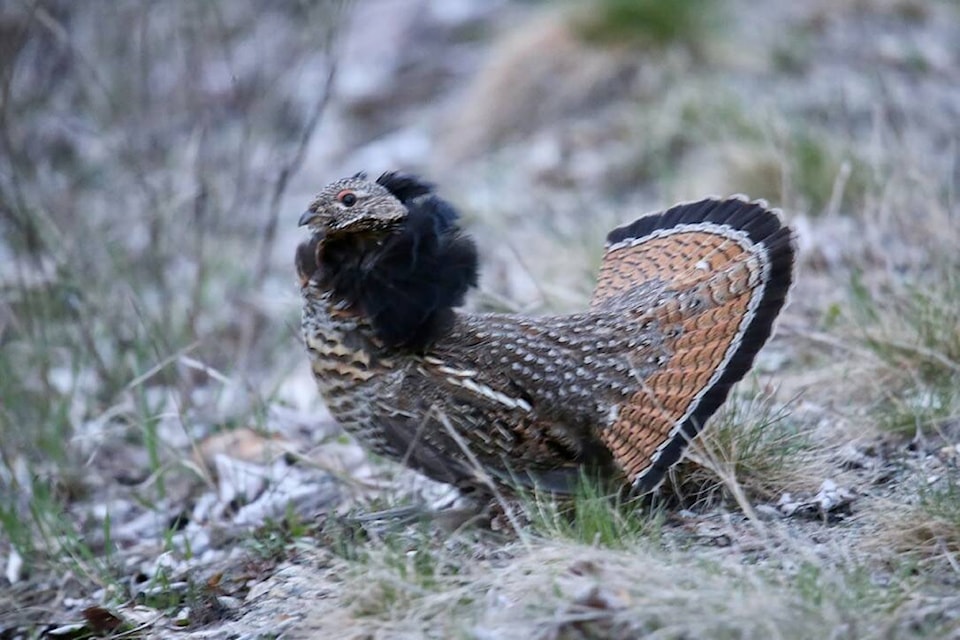Throughout British Columbia, the ruffed grouse nests on the ground in forested habitat, usually with a deciduous component, and usually near water.
Nests are mostly found at the base of trees; under bushes, shrubs or ferns; and under or next to fallen logs.
Ruffed Grouse (Bonasa umbellus)
The Ruffed Grouse is a cryptic, medium-sized game bird, although the males become conspicuous during the breeding season through their spectacular drumming behavior.
This territorial and courtship display involves the male standing on a structure that provides good sound resonance (usually an old log), raising its crest and black shoulder “ruffs”, and beating its wings (slowly at first, then very rapidly into a crescendo) to generate the drumming sound.
The Ruffed Grouse is restricted to North America, where it is resident throughout the boreal forest region and some wooded hill ranges farther south.
The Ruffed Grouse is widespread in suitable habitat throughout the province except on Haida Gwaii and other islands off B.C.’s north coast.
According to the B.C. Bird Atlas (birdatlas.bc.ca) the Ruffed Grouse is not at risk in B.C., and is considered secure across its entire range.
British Columbia is afforded a low responsibility for its conservation, although a recent estimate suggests that the province supports about 28 per cent (just over five million birds) of the global population.
It is the most popularly hunted upland game bird in B.C., accounting for 50-60 per cent of the annual upland game bird harvest; annual harvests over the past 10 years have ranged from 65,000 to 123,000 birds.
Permanent loss of riparian forests to urban sprawl is likely the major concern for this species; inundation from large scale hydroelectric projects can also cause loss of suitable riparian habitat until a new riparian corridor develops.
